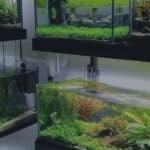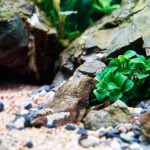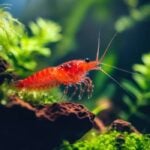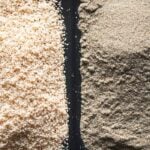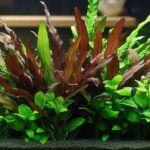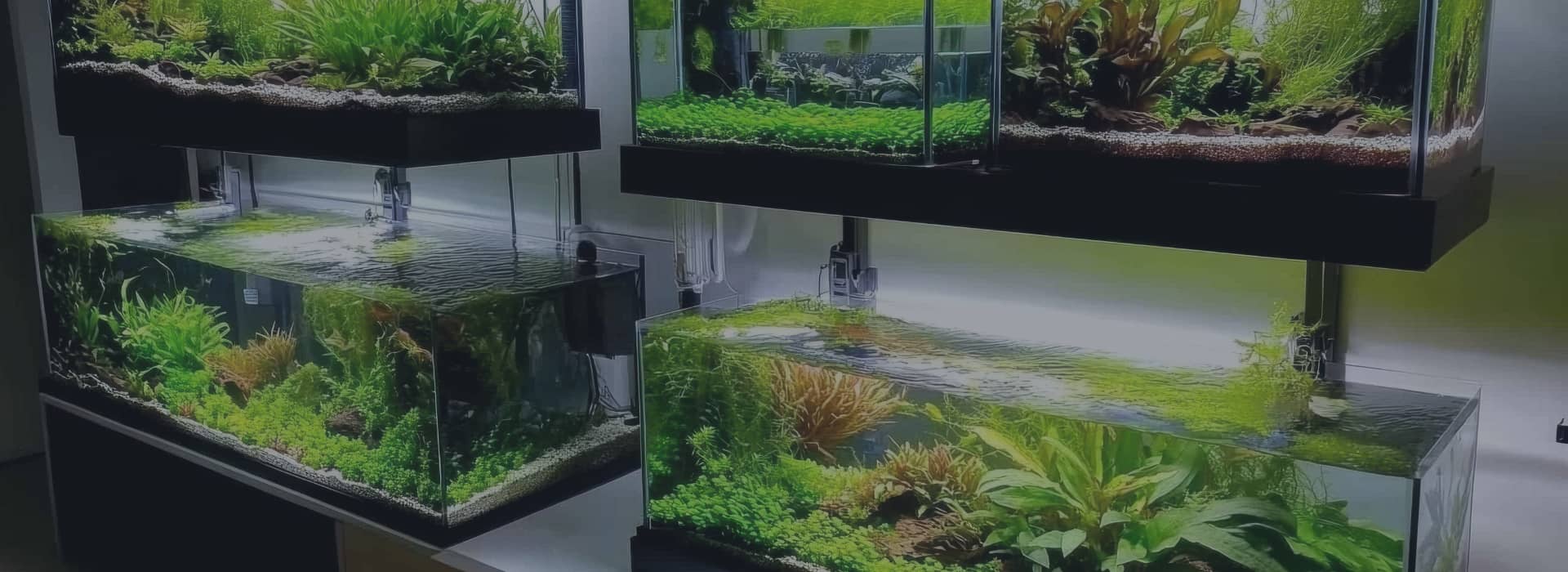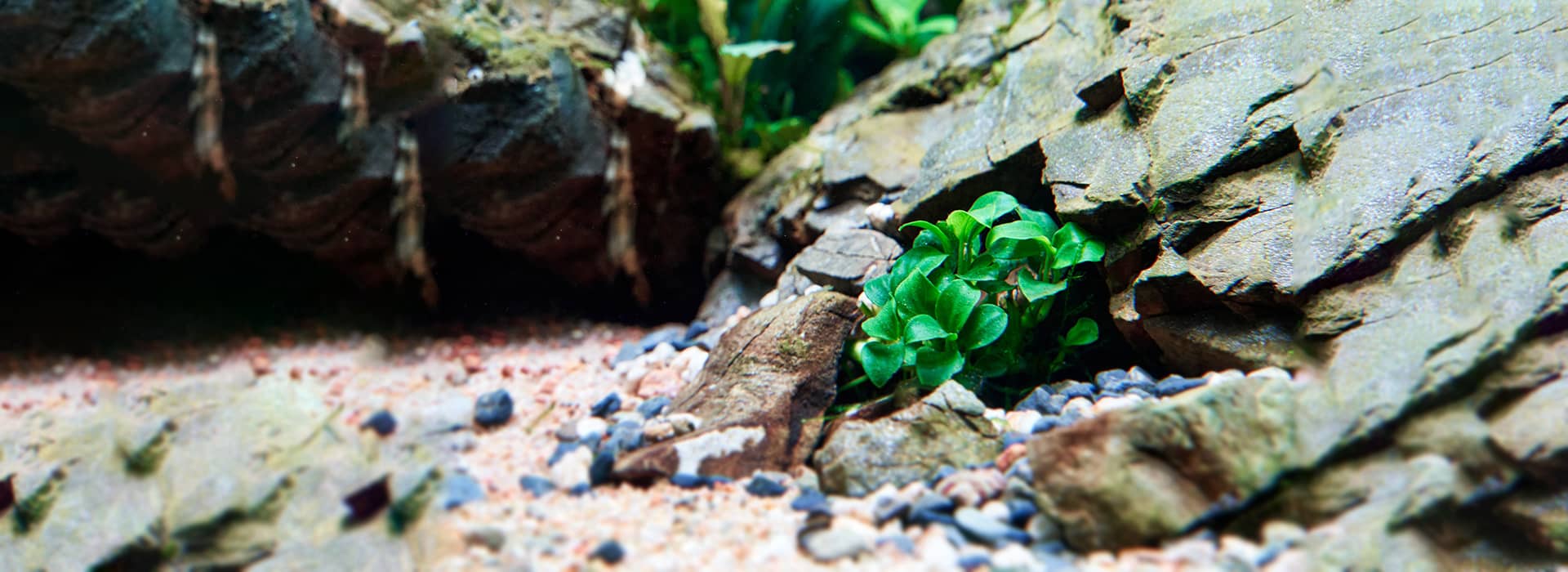This is the ultimate care guide for Panda Corydoras, one of the most charming and delightful additions you can make to your home aquarium! These small, black and white beauties are not just easy on the eyes; they’re also pretty straightforward to look after. This guide will walk you through everything you need to know—from setting up the perfect tank environment to choosing the best tank mates and even breeding your Panda Corydoras. So, let’s dive right in and make your fish-keeping experience as smooth as the waters in a well-kept tank!
Panda Corydoras Natural Habitat and Physical Description
Understanding the natural habitat and physical traits of the Panda Corydoras will give you a clearer insight into how to create a comfortable environment for them in your aquarium. So, let’s get to know these little darlings a bit better, shall we?
Natural Habitat
Native to the clear streams and shallow rivers of Peru, Panda Corydoras are accustomed to a softer substrate, typically sand or fine gravel, which allows them to sift through the bottom for food without getting injured. The water in their natural habitat is slightly acidic to neutral, with a pH level ranging from 6.0 to 7.0. The temperature usually hovers around 22°C to 25°C, and there’s plenty of aquatic vegetation to provide them with hiding spots.
Physical Description
The Panda Corydoras, named for its distinct black and white colouration resembling that of a panda bear, is a small fish that generally reaches a length of about 5 cm. Their adorable appearance is characterised by a black patch over their eyes and another one at the base of the tail. They have a flat belly, useful for bottom-dwelling, and barbels near their mouths to help them detect food in the substrate.
Lifespan and Size
In a well-maintained aquarium, Panda Corydoras can live up to 5 years. They are compact fish, with adult sizes typically not exceeding 5 cm.
Aquarium Setup: Tank Size, Filtration, and Decoration
Understanding the natural habitat and physical traits of the Panda Corydoras will give you a clearer insight into how to create a comfortable environment for them in your aquarium. So, let’s get to know these little darlings a bit better, shall we?
Natural Habitat
Native to the clear streams and shallow rivers of Peru, Panda Corydoras are accustomed to a softer substrate, typically sand or fine gravel, which allows them to sift through the bottom for food without getting injured. The water in their natural habitat is slightly acidic to neutral, with a pH level ranging from 6.0 to 7.0. The temperature usually hovers around 22°C to 25°C, and there’s plenty of aquatic vegetation to provide them with hiding spots.
Physical Description
The Panda Corydoras, named for its distinct black and white colouration resembling that of a panda bear, is a small fish that generally reaches a length of about 5 cm. Their adorable appearance is characterised by a black patch over their eyes and another one at the base of the tail. They have a flat belly, useful for bottom-dwelling, and barbels near their mouths to help them detect food in the substrate.
Lifespan and Size
In a well-maintained aquarium, Panda Corydoras can live up to 5 years. They are compact fish, with adult sizes typically not exceeding 5 cm.
Water Quality Parameters: pH, Temperature, and Hardness
Panda Corydoras are relatively hardy and adaptable, but even they do have specific requirements when it comes to water quality. Taking the time to regularly check and adjust these parameters can make a world of difference to your fish, keeping them healthy, vibrant, and active. In this section, we’ll delve into the specifics of pH, temperature, and hardness to help you ensure your tank is a welcoming habitat.
- pH Levels: The pH level in the water is a measure of its acidity or alkalinity. For Panda Corydoras, a pH range between 6.0 and 7.0 is ideal. A water testing kit is an indispensable tool for keeping an eye on this. If you find that your water is too acidic or too alkaline, there are various products available to help you adjust the pH safely.
- Temperature: Panda Corydoras thrive in water temperatures between 22°C and 25°C. It’s a good idea to invest in a reliable aquarium heater and a thermometer to maintain a stable environment. Sudden changes in temperature can stress your fish, so make sure any adjustments are gradual.
- Hardness: Panda Corydoras prefer soft to moderately hard water. The ideal hardness levels are between 2 and 12 dH (degrees hardness). Again, a water testing kit can be used to check this parameter. If necessary, you can soften the water using peat moss or commercially available water conditioners.
In a nutshell, keeping tabs on the pH, temperature, and hardness of your aquarium water is key to the long-term health and happiness of your Panda Corydoras.
Compatible Tank Mates for Panda Corydoras
Let’s talk about who the Panda Corydoras would enjoy sharing their underwater home with. One thing to keep in mind is that these fish are social creatures and thrive in the company of their own kind.
The Ideal Group: Ideally, you’d want a small group of at least six Panda Corydoras to make them feel comfortable and lively. A group setting allows them to display their natural behaviours like schooling and scavenging together.
Community Fish: Good tank mates for Panda Corydoras are generally peaceful community fish. Species like tetras, guppies, and mollies are excellent choices because they occupy different areas of the tank and have similar care requirements.
Avoid Aggressive Fish: It’s crucial to steer clear of aggressive or territorial species, such as cichlids, which may cause unnecessary stress or even harm your Panda Corydoras.
Size Considerations: When choosing tank mates, aim for fish that are roughly the same size as your Panda Corydoras to ensure that everyone gets along well.
Panda Corydoras prefer a social environment, whether it’s with their own kind or other friendly community fish. Choose tank mates wisely to create a harmonious aquatic community where every finned friend can thrive.
Feeding: Diet and Nutrition
Time to dive into the delicious world of Panda Corydoras’ diet and nutrition. What you feed these cute little scavengers plays a vital role in their health and longevity. Let’s get into the details.
- Staple Diet: Panda Corydoras are primarily bottom feeders and enjoy a diet of sinking pellets and wafers. These foods are designed to sink to the bottom of the tank, allowing the corydoras easy access.
- Variety Is Key: It’s good to mix things up to ensure a balanced diet. Incorporating live or frozen foods like brine shrimp, daphnia, and bloodworms will provide essential nutrients and keep your fish interested.
- Plant Matter: While not entirely vegetarian, Panda Corydoras do enjoy a bit of plant-based food. Offering them cucumber or zucchini slices, which sink to the bottom, can be a nice addition to their diet.
- Frequency and Portion Size: Feeding them once or twice a day is usually sufficient. Be cautious with the amount, as overfeeding can lead to poor water quality. Aim for a portion that they can consume within a few minutes.
- Feeding Schedule: A set feeding schedule is beneficial for these creatures. Being consistent with feeding times helps regulate their internal clocks and keeps them active and healthy.
In essence, the dietary needs of Panda Corydoras aren’t overly complex but do require some variety to ensure they get all the nutrients they need. By sticking to a consistent feeding schedule and offering a mix of foods, you’ll keep your Panda Corydoras happy and healthy.
Breeding Conditions and Steps
Breeding Panda Corydoras can be a bit challenging but not impossible. By understanding their natural breeding conditions and creating a conducive environment in the aquarium, you’ll stand a great chance of witnessing the next generation of these charming fish. Here’s what you need to know.
Optimal Water Parameters:
Just like for their general care, water quality plays a pivotal role in the breeding process. A slightly cooler water temperature can often stimulate spawning. Aim for a temperature of around 22-24°C and soft water with a pH ranging from 6.0 to 7.0.
Setting the Mood with Plants:
Using live plants or spawning mops gives female Panda Corydoras a place to deposit their eggs. Java moss or similar plants are excellent choices for this purpose.
Dietary Preparation:
A diet rich in proteins a couple of weeks leading up to the breeding attempt can do wonders. High-quality flakes, small pellets, and live or frozen foods like brine shrimp can help get your fish into optimal breeding condition.
Breeding Tank:
A separate breeding tank can help you better control the environment. A smaller tank, around 40-50 litres, with a gentle filter system will suffice. Make sure to replicate the water conditions of the main tank.
The Spawning Process:
Once the stage is set, introduce the conditioned fish into the breeding tank. Spawning usually occurs in the early morning. Females will lay eggs on the plants or spawning mops, which the males will then fertilise.
Post-Spawning Care:
After spawning, it’s advisable to remove the adult fish to prevent them from eating the eggs. The eggs typically hatch within 3 to 5 days. Once hatched, the fry can be fed infusoria or specialised fry foods until they’re large enough to consume regular foods.
While breeding Panda Corydoras requires a bit of preparation and attention to detail, the joy of watching these little fish come into the world makes it all worth it. With proper care and the right conditions, you’ll soon be a pro at breeding these adorable aquatic creatures.
Health and Disease Management: Common Illnesses and Treatments
When it comes to keeping your Panda Corydoras healthy, knowing how to manage and treat common illnesses is essential. From recognising symptoms early to understanding various treatments, a proactive approach can make all the difference.
Common Illnesses:
- Ichthyophthirius (Ich) – Characterised by white spots on the fish’s body, Ich is one of the most common diseases affecting Panda Corydoras. It’s best treated with anti-Ich medication and slightly raising the tank temperature to about 26-28°C for a short period.
- Fin Rot – If you notice that the fins of your Panda Corydoras look frayed or discoloured, they may be suffering from fin rot. Treating the water with antibiotic medications specifically designed for fin rot usually does the trick.
- Fungal Infections – Cotton-like growths on the skin, fins, or mouth are usually a sign of a fungal infection. Anti-fungal medications are generally effective in treating this condition.
- Swim Bladder Disorder – A fish with this disorder might have trouble maintaining its buoyancy. While less common in Panda Corydoras, a diet of high-fibre foods like peas can sometimes help alleviate the symptoms.
Treatment Protocols: When administering medication, always remove activated carbon from your filter, as it can absorb the medication and render it ineffective. Follow the dosage instructions on the medication and consult local aquarist groups or professionals if you’re unsure.
Quarantine Measures: If you notice a fish showing signs of illness, it’s advisable to quarantine it in a separate tank immediately. This helps prevent the spread of disease to other tank mates while making treatment more manageable.
Water Quality: Maintaining optimal water parameters is crucial in both preventing and treating diseases. Regular water tests for pH, temperature, and hardness can alert you to any conditions that might make your Panda Corydoras susceptible to illnesses.
Early detection, proper treatment, and preventive measures can go a long way in ensuring your fish live a happy, healthy life. Always remember, a well-cared-for Panda Corydoras is a happy Panda Corydoras!
Routine Aquarium Maintenance: Water Changes and Filtration Cleaning
Taking care of your Panda Corydoras involves more than just feeding them and enjoying their playful antics. Regular aquarium maintenance is vital for keeping your fishy friends in tip-top shape. Let’s delve into the key aspects of routine aquarium upkeep, which includes water changes and filtration cleaning.
Water Changes:
Changing the water in your aquarium is essential to eliminate harmful waste and replenish essential nutrients. A 20-30% water change every week is generally recommended for a Panda Corydoras tank. During this process, always make sure to match the temperature and pH of the new water to the existing tank conditions to avoid shocking your fish.
How to Conduct a Water Change:
- Turn off all electrical devices like heaters and filters.
- Remove 20-30% of the tank water using a siphon.
- Treat new water with a dechlorinator and match it to the tank’s temperature.
- Slowly add the new water back into the tank.
- Turn the electrical devices back on.
Filtration Cleaning:
An effective filtration system is crucial for maintaining water quality. Panda Corydoras produce waste that needs to be filtered out, and for that, a robust filtration system is necessary. Cleaning half the filter media every two months ensures that it operates at peak efficiency.
Steps for Cleaning the Filter:
- Turn off the filter and carefully remove it from the tank.
- Open the filter and take out the mechanical, biological, and chemical media.
- Rinse half the mechanical media in the water you removed from the tank during the water change to preserve beneficial bacteria.
- Replace chemical media like activated carbon every month, or as recommended by the manufacturer.
Importance of Monitoring Water Quality:
Part of your maintenance routine should also include regular water quality tests. Keep an eye on parameters like pH, ammonia levels, and nitrate concentrations. A good water testing kit is invaluable for this purpose.
By dedicating time to regular aquarium maintenance, you not only ensure a clean environment but also help prevent diseases and stress in your Panda Corydoras. This regular care is an essential component of keeping your underwater pals healthy and happy. So, roll up those sleeves and make maintenance a regular part of your fish-keeping journey!
Panda Corydoras and Aquascapes
Panda Corydoras are not just adorable and easy-going; they also contribute significantly to the beauty and functionality of aquascapes. If you’re an enthusiast who loves both aquascaping and fish-keeping, incorporating Panda Corydoras into your underwater landscape can be rewarding. Here’s how these fish fit into various aquascaping styles and why they are a brilliant choice for your planted tank.
Aquascaping Styles Suitable for Panda Corydoras:
Different aquascaping styles provide varied hiding spots and swimming areas for fish. Panda Corydoras usually adapt well to the following types:
- Nature Aquascapes: In these setups, natural rocks and driftwood along with plants create a wild, river-like environment that Panda Corydoras appreciate.
- Dutch Aquascapes: Known for their lush plant life, these aquascapes offer plenty of foliage for Panda Corydoras to hide and forage.
- Jungle Aquascapes: These offer dense vegetation and multiple hiding spots, making it a paradise for these shy, little creatures.
Role in Algae Control:
Panda Corydoras are excellent custodians when it comes to algae control. They happily forage along the substrate, munching on algae, thus contributing to a cleaner and more balanced environment. However, they should not be solely relied upon for algae control, especially in larger setups.
Benefit to Plant Health:
These fish are what you might call gentle foragers. While they do sift through substrate, they are usually careful not to uproot plants. This is particularly beneficial in heavily planted aquascapes where maintaining plant positioning is critical.
Considerations for Plant Selection:
When adding plants to your aquascape, go for hardy varieties like Java Fern, Anubias, or Vallisneria, which can withstand the Panda Corydoras’ gentle foraging. Plants with delicate leaves might not be suitable, as they could get damaged.
Harmony and Aesthetics:
Beyond their functional benefits, the playful antics and cute appearance of Panda Corydoras add a layer of liveliness to your aquascape. Their contrasting black and white markings often make them a focal point against a green backdrop, enhancing the overall aesthetic appeal.
Panda Corydoras are a terrific addition to a range of aquascaping styles. They not only serve practical roles in algae control and substrate aeration but also add a delightful visual element. With their non-disruptive behaviour and compatibility with a range of plants, these fish can be the finishing touch that takes your aquascape from good to great!
Panda Corydoras Trivia: Fun Facts
Panda Corydoras are full of surprises! So, let’s delve into some fun facts that make them even more fascinating:
- Named After a Panda: With their black and white markings, these fish get their name due to a resemblance to the giant panda bear.
- Group Dancers: Panda Corydoras often engage in a group dance, swimming up and down in synchrony. It’s quite the sight!
- Night Owls: These fish are more active during the night, foraging and exploring the tank while you’re tucked in bed.
- They Make Sounds: When stressed or during mating rituals, they are known to produce quiet clicking sounds.
- Shy but Social: Though they might be shy around human presence, they’re incredibly social with their own kind and love to be in groups of at least five or six.
- Barbel-tastic: The barbels (or whiskers) near their mouths aren’t just for show. They use them to dig through substrate for food.
- Tank Cleaners: Panda Corydoras act like little vacuum cleaners for your aquarium, picking up food particles that other fish might miss.
- Air Breathers: While they are well-adapted to underwater life, these fish also need to gulp air from the surface occasionally.
- Sensitive Fellas: These fish can be sensitive to water changes and medication, so always double-check compatibility when introducing something new to the tank.
- Short Lifespan: Unfortunately, they live for around 3 to 5 years, which is relatively short compared to other freshwater fish species. So, make the most of your time with them!
- Temperature Tolerant: They can adapt to a wide range of temperatures, from 18 to 26 degrees Celsius, making them suitable for various setups.
- Soft Substrate Lovers: Their preference for a soft substrate like sand over gravel ensures they can forage without harming their delicate barbels.
How many of these trivia bits did you already know? These fun facts surely add another layer of charm to these already adorable aquarium inhabitants!
FAQ
What size tank do Panda Corydoras need?
A tank of at least 75 litres is recommended for housing a small group of Panda Corydoras. They are social by nature and prefer to live in groups of 5 to 6 or more.
What type of substrate is best for Panda Corydoras?
Soft sand works well for these fish as it allows them to sift through the substrate without damaging their delicate barbels.
Ideal water temperature for Panda Corydoras?
The preferred water temperature range for Panda Corydoras is between 18 and 26 degrees Celsius.
What are the dietary needs of Panda Corydoras?
A well-balanced diet consisting of high-quality flake food and sinking pellets is ideal. Occasional treats like bloodworms or brine shrimp can also be offered.
How often should I change the water in a Panda Corydoras tank?
A regular water change of 20-25% every week helps maintain a healthy environment for your fish.
Can Panda Corydoras live with other fish?
Yes, Panda Corydoras are generally peaceful and get along with similarly peaceful tank mates.
Any common diseases to watch out for in Panda Corydoras?
Ich and fin rot are among the common diseases. Prompt treatment with antiparasitic or antibacterial medication is crucial.
What are the breeding conditions for Panda Corydoras?
They prefer slightly acidic water and a temperature around 23 degrees Celsius for breeding. Providing them with plenty of hiding spaces like plants can encourage spawning.
Conclusion
In wrapping up this comprehensive guide, it’s clear that caring for Panda Corydoras is both a fulfilling and manageable experience for aquarists of all levels. From setting up an appropriate aquarium with soft sandy substrates and effective filtration, to maintaining optimal water conditions, there are clear steps to follow for success.
We’ve also covered the social nature of these charming bottom-dwellers, emphasizing the need for compatible tank mates and a school of their own kind for them to truly thrive. Nutrition-wise, a balanced diet consisting of quality flakes and occasional live or frozen treats will keep them happy and healthy.
Breeding these little fellows involves some specific conditions but is highly rewarding. Healthwise, keeping an eye out for common ailments like Ich and fin rot, and acting quickly can save you a lot of trouble.
Finally, regular tank maintenance cannot be overstated. Weekly water changes and timely filtration cleaning will make your Panda Corydoras feel right at home.
By following this guide, you’re not just ensuring a healthy life for your Panda Corydoras; you’re setting the stage for an endlessly fascinating underwater world right in your own home. Cheers to your fishkeeping journey!
